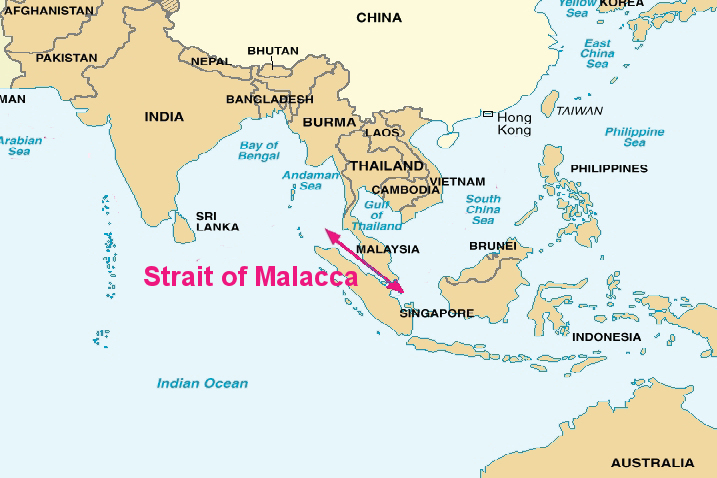 |
| Malacca Strait (Wiki Info - Image: Wiki Commons) |
By Zachary Keck
Along with the Strait of Hormuz in the Persian Gulf near Iran and Oman, the Strait of Malacca is the world’s most important shipping chokepoint.
Linking the Indian Ocean to the South China Sea and Pacific Ocean, the Malacca Strait is by far the shortest maritime route connecting Persian Gulf energy producers to their largest consumers in countries like China, Japan, and South Korea.
50,000 merchant ships carrying 40 percent of all world trade pass through the 900-km long (550 miles) strait each year. It’s particularly strategic for regional energy supplies. According to the U.S. government’s Energy Information Agency (EIA), in 1993 about 7 million barrels per day (bbl/d) of oil and petroleum products—at the time about 20 percent of global seaborne traded oil— transited the Strait of Malacca. By 2011, this number had risen to 15 million bbl/d or 33 percent of all seaborne traded oil.
Northeast Asia’s dependence on oil coming through the strait is remarkable. Japan relies on the Malaccan Strait for about 90 percent of its oil imports. As recently as 2010, China relied on the strait (PDF) for some 80 percent of its imported oil. Little wonder then that former President Hu Jintao famously referred to China’s Malacca Dilemma.
Three nations—Singapore, Malaysia, and Indonesia— sit atop the Malaccan Strait, which is just 1.7 miles (2.7 km) wide at its narrowest point. While foreign navies like the United States have traditionally operated in the area, and China’s navy has increasingly taken a strong interest in doing so, the naval forces of these littoral states should not be overlooked.
Indeed, taking stock of their strategic location, all three countries have acquired submarine forces, with Indonesia in particular possessing considerable subsurface ambitions for the future.
Read the full story at The Diplomat

 Logging you in...
Logging you in...